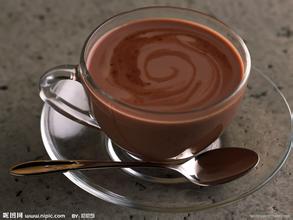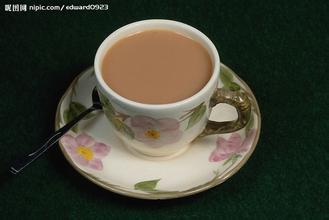Cuban Coffee Culture Cuban Crystal Coffee introduction Fine Coffee beans
Coffee was introduced into Cuba from Dominica in 1748. In Cuba, where the land is fertile and the climate is humid, Rain Water's abundant area has become the most suitable place to grow coffee. After that, coffee began to be grown and developed in Cuba. In the Central Mountains of Cuba, it is the best place to grow Cuban coffee, in which Crystal Mountain coffee is synonymous with top Cuban coffee.
(coffee growers in Cuba)
↓↓
Cuba's Top Amber Coffee
The coffee beans selected by Cuban Amber Coffee (Cubita) are Arabica varieties grown in the crystal mountains of Cuba and are known as "unique Caribbean flavor coffee". Coffee beans are picked by hand, washed and refined, removing defective beans and other impurities to the greatest extent, coupled with the careful roasting of experienced roasters, it is rare to have the unique coffee beans in the world.
(Cuba's Top Amber Coffee (Cubita) from Crystal Mountain, Cuba)
↓↓
Cuban Coffee Culture in past Life and present Life
Walking on Havana Street in Cuba, you can taste the city through coffee. The coffee culture here is a precious cultural treasure of Cuba. In fact, as early as the beginning of the 20th century, there were more than 150 cafes in Cuba, and although it was later reduced because of two other Cuban business cards-rum and Cuban cigars, Cubans' love of coffee remains the same.
Drinking coffee is indispensable to the life of Cubans.
↓↓
"Family Cafe" was born in Cuba
Because of policy and low income, Cubans began to make their own coffee at home. Almost every household has a mocha pot for coffee, which is the most commonly used coffee pot for Cubans. Unable to enjoy the full-bodied espresso in the coffee shop, Cubans try to imitate the taste of espresso with a mocha pot at home. After making the coffee, Cubans will add a spoonful of brown sugar foam to the coffee instead of the coffee fat on the espresso.
(the Cuban old man proudly took out the mocha pot he had used for 20 years.)
The popularity of home-made coffee has nurtured a large number of family-style cafes. For workers who can't enjoy coffee at home, drinking coffee outside the window of a family cafe is the best choice. And this kind of family cafe is cheaper, and coffee usually costs 1 peso, or 3 cents.
(it's so easy to buy a cup of coffee by passing through the "Family Cafe" in Cuba.)
(when you are tired from work, you can also go to the Family Cafe to buy a cup of coffee.)
(in front of the family cafe, a little boy waiting to buy coffee)
↓↓
Experience standing up drinking coffee in a traditional Cuban cafe
In addition to family cafes, there are also many traditional Cuban coffee shops in the old city of Havana. Here is an interesting rule: traditional coffee shops in Cuba cannot take out. After ordering coffee, guests have to stand outside the counter and finish drinking. Guests can chat with the shop assistant while drinking, which is the most intimate way of cultural exchange.

Important Notice :
前街咖啡 FrontStreet Coffee has moved to new addredd:
FrontStreet Coffee Address: 315,Donghua East Road,GuangZhou
Tel:020 38364473
- Prev

An introduction to the planting History of Kona Coffee in Hawaii in the Manoa Valley area of Oahu
In 1813, a Spaniard first grew coffee in the ManoaValley Valley of Oahu, which is today the main campus of the University of Hawaii. In 1825, an English agronomist named John Wilkinson transplanted some coffee from Brazil to grow in the coffee garden of Chief Birch on the island of Oahu. Three years later, a man named Samuel Riveland Draggs (
- Next

Introduction of coffee producing areas in Uganda Ruwenzori (Ruwensori) in the west of Robart Coffee Bean
In Uganda, the value of coffee is much more than a drink, it is an indispensable part of interpersonal communication. The coffee beans are wrapped in banana leaves and roasted over the fire to make a food called Mpokoto, which is very much like Chinese zongzi. David took out some coffee beans for me to chew and taste together. David explained that chewing coffee beans is a symbol of the relationship between people and the instrument of relationship building.
Related
- Does Rose Summer choose Blue, Green or Red? Detailed explanation of Rose Summer Coffee plots and Classification in Panamanian Jade Manor
- What is the difference between the origin, producing area, processing plant, cooperative and manor of coffee beans?
- How fine does the espresso powder fit? how to grind the espresso?
- Sca coffee roasting degree color card coffee roasting degree 8 roasting color values what do you mean?
- The practice of lattes: how to make lattes at home
- Introduction to Indonesian Fine Coffee beans-- Java Coffee producing area of Indonesian Arabica Coffee
- How much will the flavor of light and medium roasted rose summer be expressed? What baking level is rose summer suitable for?
- Introduction to the characteristics of washing, sun-drying or wet-planing coffee commonly used in Mantenin, Indonesia
- Price characteristics of Arabica Coffee Bean Starbucks introduction to Manning Coffee Bean Taste producing area Variety Manor
- What is the authentic Yega flavor? What are the flavor characteristics of the really excellent Yejasuffi coffee beans?

